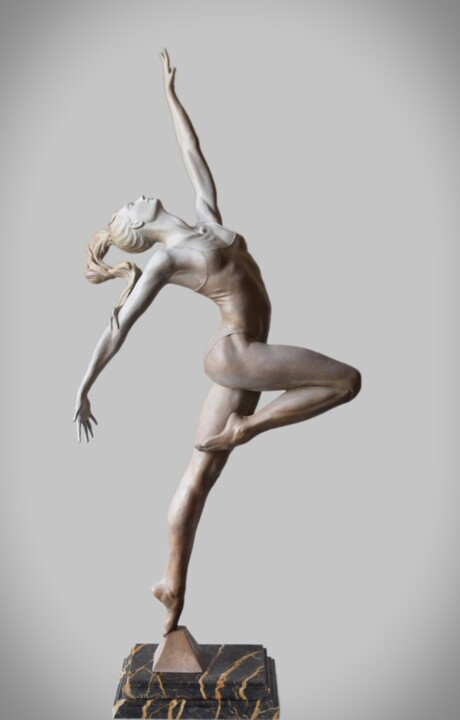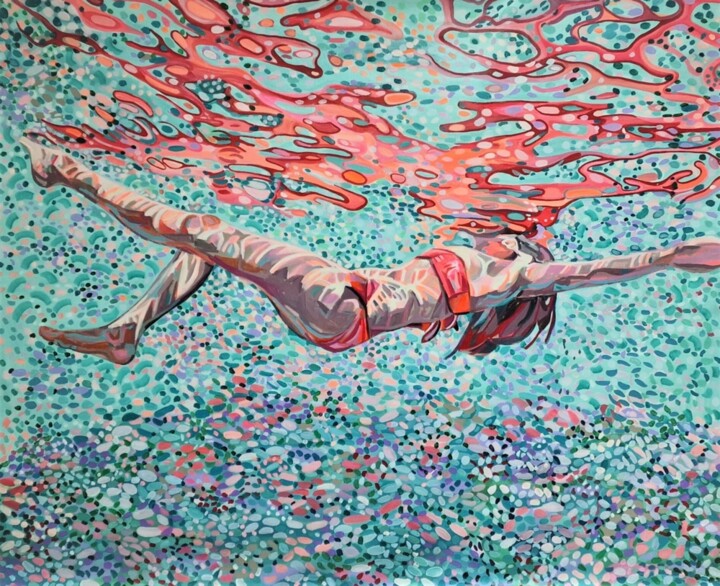The 10 most important questions to ask a wealth manager regarding the tax exemption of works of art
When consulting a wealth management advisor for advice on buying artwork tax-exempt, renting with option to buy, leasing or multiple payment, here are the main questions to ask to your wealth manager:
1. What are the advantages and disadvantages of buying works of art under a tax exemption scheme?
Purchasing works of art under a tax exemption scheme has both advantages and disadvantages. Here is a list of the main things to consider:
Benefits :
- Tax reduction: The purchase of eligible works of art allows you to benefit from a tax reduction, which can represent a significant saving.
- Wealth Diversification: Art can be an alternative asset class that diversifies your wealth, reducing the risks associated with the volatility of other investments.
- Potential Valuation: Works of art can increase in value over time, providing the opportunity for a gain if resold.
- Aesthetic Appreciation: The purchase of works of art makes it possible to appreciate and own unique artistic creations, contributing to personal and cultural enrichment.
Disadvantages:
- Liquidity risk: Works of art can be illiquid assets, which means that it can be difficult to sell them quickly when cash is needed.
- Price volatility: The value of works of art may be subject to significant fluctuations depending on the art market, making it difficult to predict returns.
- Expertise needed: Assessing the value of an artwork and identifying eligible works may require specialized expertise to avoid costly mistakes.
- Conservation constraints: Some tax exemption schemes require works of art to be kept for a specific period, thus limiting the flexibility of asset management.

© Wolfgang Pohn
2. What criteria should be taken into account when choosing works of art eligible for tax exemption?
When choosing works of art eligible for tax exemption, here are some criteria to consider:
Heritage interest: Works of art eligible for tax exemption must generally be of heritage interest, ie they must have significant artistic, historical or cultural value.
Certifications and expertise: It is important to verify the authenticity of the work and to obtain certificates of authenticity issued by recognized experts in the field of art. Professional appraisals can also help assess the value of the work.
Compliance with tax criteria: Each tax exemption scheme may have specific criteria to be met. Make sure that the works selected meet the legal and tax requirements, such as the nationality of the artist, the place of conservation of the work, etc.
Valuation potential: It is best to choose works of art that have long-term valuation potential, as this can increase the chances of realizing a favorable financial return in the future.
Diversification: Opt for diversification in your choices of artwork in terms of styles, eras, artists, mediums, etc. This makes it possible to reduce risks and to appreciate the richness of artistic diversity.
Personal taste: Don't forget to consider your own preferences and artistic affinities. You should enjoy the work you are purchasing as it can contribute to your personal satisfaction and commitment to your collection.

© Plamen Bibeschkov
3. What are the obligations or constraints related to the rental with option to purchase works of art?
The rental with option to purchase works of art may be accompanied by specific obligations and constraints. Here are some things to consider:
- Duration of the contract: The lease with option to buy is generally concluded for a fixed period. You must respect the duration of the contract and the conditions agreed with the owner of the work.
- Regular payments: You are required to respect the terms of payment agreed in the rental agreement. This may involve monthly, quarterly or annual installments, depending on the arrangements made.
- Preservation of the work: You have the obligation to preserve the work of art under appropriate conditions for the duration of the contract. This may include specific guidelines on the environment, lighting, handling and protection of the artwork.
- Insurance: It is generally required to take out appropriate insurance to cover potential damage, loss or theft of the work during the rental period.
- Purchase option: At the end of the rental period, you have the option of purchasing the work according to the agreed terms. You must take into account the financial conditions and specific terms related to the purchase option.
It is important to carefully read the rental agreement with option to buy and to clarify all the terms, obligations and constraints before committing yourself. Consult an art lawyer to ensure you understand all the legalities and responsibilities of renting-to-own artwork.

© Andrei Sitsko
4. What are the financial and tax implications of art leasing?
Artwork leasing can have specific financial and tax implications to consider. Here are some important things to consider:
- Leasing costs: When you choose to lease an artwork, you will have to pay regular rental fees during the term of the contract. These costs may vary depending on the value of the work, the duration of the lease and the conditions negotiated.
- Tax treatment of leasing costs: Leasing costs may be deductible as a professional or business expense, depending on the intended use of the artwork. It is essential to consult a tax advisor to understand the tax implications specific to your situation.
- VAT and leasing: In some countries, VAT may apply to the cost of leasing works of art. Tax rules regarding VAT can vary, so it is important to research local regulations and consult a tax advisor to assess the impact of VAT on leasing costs.
- Buyout options: Some lease agreements may include a buyout option at the end of the lease term. The financial implications of this option should be considered, including the agreed purchase price, possible tax consequences and terms of transfer of ownership.
- Tax depreciation: In some cases, you can tax-depreciate the cost of leasing a work of art over the term of the contract. This can reduce your tax burden during the rental period. Depreciation rules may vary between tax jurisdictions, so it is important to consult a tax advisor to understand the options available.

© Anna Gigon
5. What are the advantages and limitations of multiple payment when acquiring works of art?
Multiple payment when acquiring works of art has both advantages and limitations. Here is a list of the main things to consider:
Benefits :
Cash management: Multiple payment spreads the cost of purchasing the artwork over a period of time, which can make it easier to manage your cash flow and reduce the immediate financial impact.
Financial accessibility: By dividing the payment over several installments, multiple payment can make the acquisition of works of art more financially accessible, by making it possible to make purchases that could be difficult to make in one go.
Diversification of acquisitions: By using multiple payment, you can consider acquiring several works of art simultaneously, which promotes the diversification of your collection and allows you to discover different artists, styles or eras.
Boundaries :
Increased total cost: Multiple payment may result in a higher total cost due to the interest or fees associated with financing spread over time. It is important to understand the specific financial terms and calculate the total cost before making a decision.
Long-term financial commitment: By opting for multiple payment, you commit to making the agreed payments over a given period. This limits your financial flexibility and may impact your available resources for other projects or investments.
Valuation risk: If the acquired artwork does not appreciate in value over time or if the art market experiences a decline, you could face a discrepancy between the total cost paid and the actual value of the work.
It is essential to carefully assess the benefits and limitations of multiple payment based on your financial situation, personal goals and risk tolerance. It is recommended that you consult a wealth management advisor or art expert for advice tailored to your specific situation and to make an informed decision.

© Alexandr Karat
6. How to assess the potential profitability of these different options for purchasing works of art?
Assessing the potential profitability of different art purchase options can be complex and will depend on several factors. Here are some things to consider when evaluating potential profitability:
- Professional expertise: It is a good idea to consult art experts, such as wealth management advisers specializing in artistic investments, gallery owners or specialists in the art market or the works you are targeting. Their expertise will help you assess the artistic quality, value and growth potential of works of art.
- Price History: Analyze past art market trends to understand how art prices have evolved. This can give you an idea of the potential performance of your investment. However, it is important to note that past performance does not guarantee future performance.
- Market research: Study the art market to identify artists, art movements or themes that are attracting growing interest. The demand for certain categories of works of art can influence their long-term value.
- Retention of value: Some works of art retain their value better than others. Established artists, quality works, historical pieces, or works of art that are part of significant art movements may be more likely to maintain or increase in value over time.
- Condition Assessment: The physical condition of a work of art can play a role in its value and profitability. Well-preserved works, with a good state of preservation, may be more attractive to collectors and investors.
- Diversification: Diversifying your artwork portfolio can help reduce risk and increase the chances of earning satisfying returns. By investing in different artists, styles, eras, or mediums, you can balance fluctuations in the art market.
- Investment horizon: The assessment of potential profitability must take into account your investment horizon. Art can be a long-term investment, and the value of artwork can change over years or even decades.
Assessing the potential profitability of artistic investments involves a degree of uncertainty. The art market can be influenced by unpredictable external factors. Consult with art experts, do thorough research and diversify your investments to reduce risk and maximize your chances of realizing good returns.

© Viktoriya Filipchenko
7. What safeguards and warranties should be considered when buying works of art in these specific settings?
When buying works of art under specific frameworks such as tax exemption, rental with option to buy, leasing or multiple payment, it is essential to take into account the protection measures and guarantees for ensure the security of your investment. Here are some of the key metrics to consider:
- Authenticity: Make sure of the authenticity of the work of art by asking for certificates of authenticity, provenances or expertise carried out by recognized specialists. Check the reputation of the seller or gallery you are purchasing from.
- Artwork Condition: Examine the physical condition of the artwork before purchase. If possible, ask for a detailed report on its condition, especially for old or fragile works. Make sure the work is in good condition.
- Sales contract: Sign a detailed sales contract drawn up by a professional. The contract should include essential information such as description of the work, price, payment terms, delivery terms and warranties.
- Provenance: Ask about the provenance of the work of art to ensure that it is not the result of trafficking or theft. Ask for information on its history, previous owners and traceability.
- Insurance: Take out adequate insurance to cover the risks associated with the possession and transport of the work of art. Check your insurance coverage to ensure your investment is protected in the event of damage, theft or loss.
- Professional expertise: Use art experts, such as specialist wealth advisors or museum curators, for professional advice on the authenticity, value and quality of works of art.
- Seller reputation: Ask about the reputation of the seller, gallery or institution you are purchasing from. Check reviews, search for references, or ask for recommendations to make sure you're dealing with trusted professionals.

© Alexandra Djokic
8. What are the legal aspects and administrative formalities to consider for each option?
When acquiring works of art under the different options such as tax exemption, rental with option to buy, leasing or multiple payment, it is important to consider the specific legal aspects and administrative formalities. at each option. Here is a list of the main aspects to consider:
- Tax exemption: In the case of tax exemption, it is essential to understand the tax regulations in force and to comply with the specific requirements to benefit from the tax advantages. This may include rules on eligible works, beneficiary organizations, tax deduction limits, reporting obligations and retention requirements.
- Rent-to-own: Rent-to-own usually involves drafting a specific rental agreement, detailing the terms of the lease, monthly payments, length of contract, and terms of the option to buy. . It is essential to understand the rights and obligations of each party and to ensure that the contract complies with the legislation in force.
- Leasing: The leasing of works of art also involves a specific contract between the owner of the work (the lessor) and the tenant. This leasing contract must define the terms of payment, the duration of the contract, the insurance obligations, the conditions of conservation and the terms of return of the work at the end of the contract. It is important to comply with the rules and regulations of the lease agreement and check the specific legal aspects in your jurisdiction.
- Multiple payment: When you opt for a multiple payment, it may be necessary to draw up a written contract or agreement defining the terms of payment, the due dates, any interest and the obligations of each party. It is important to respect the terms of the contract and understand the legal implications of non-payment or cancellation of the agreement.
In addition to these specific aspects, it is also important to comply with general laws and regulations regarding the purchase of works of art, particularly with regard to copyright, provenance of works, export or import of works of art, insurance, and rules for the protection of cultural heritage.
9. What are the recent changes in tax legislation and regulations concerning the purchase of works of art in these schemes?
Tax laws and regulations may vary from country to country and are subject to change over time. It is therefore important to consult official sources, such as the websites of the tax authorities or to consult specialized tax and legal experts to obtain the most recent and accurate information on the laws and regulations in force in your country concerning the purchase of works of art in these specific devices. Do not hesitate to contact an artistic adviser on Artmajeur for more information.

© Zhao Yongchang
10. How do these strategies fit into my overall wealth situation and financial goals?
How these strategies fit into your overall wealth situation and financial goals will depend on several factors, such as your financial situation, long-term goals, risk tolerance and personal preferences. Here are some key points to consider:
- Assessing your financial situation: It is important to understand your overall financial situation, including your assets, liabilities, income and expenses. This will help you determine the availability of funds to invest in artwork and assess how much you can spend on this investment.
- Financial goals: Identify your short, medium and long term financial goals. Consider whether investing in artwork aligns with these goals and fits into your overall investment strategy. Also consider other investments and assets in your portfolio for proper diversification.
- Risk profile: Evaluate your risk tolerance and your ability to withstand fluctuations in value and the risks associated with investing in works of art. Keep in mind that the value of works of art can vary depending on the art market, demand from collectors and economic factors.
- Investment Term: Determine how long you plan to hold the artwork. Some schemes, such as rent-to-own, may be more suitable for shorter periods, while others, such as tax exemption, may require a longer-term commitment.
- Portfolio Diversification: Consider investing in artwork as part of a strategy to diversify your investment portfolio. It is generally recommended to diversify assets in order to reduce risk and maximize return opportunities.
- Professional advice: It is advisable to consult wealth management advisors, tax experts and specialists in the art for personalized advice on how these strategies can fit into your wealth situation and your specific financial objectives. . They can help you assess the potential benefits, risks, tax implications and legal aspects associated with these strategies.

© David Gerstein
Why invest in original works on Artmajeur?
Our Artmajeur online gallery offers convenient access to a wide range of artworks, from popular artists to emerging talents. Detailed information, ease of research, practical financing tools and a direct relationship with artists make Artmajeur an excellent solution for finding works to invest in:
- Wide choice of works: Artmajeur offers a wide selection of works of art from artists around the world. You can find works in different artistic styles, mediums and categories, allowing you to explore a wide range of options and choose works that suit your artistic preferences and investment strategy.
- Popular and emerging artists: Artmajeur highlights popular artists as well as emerging talents. This means you can discover promising new artists and invest in works that may increase in value in the future. Purchasing works by up-and-coming artists can offer the potential for appreciation and attractive investment.
- Transparency and detailed information: On Artmajeur, you have access to detailed information about each work of art, including descriptions, dimensions, techniques used, and information about the artist. You can also view reviews and comments from other buyers, allowing you to gain additional information before making a purchasing decision.
- Ease of Search and Navigation: The Artmajeur site offers a user-friendly interface and advanced search tools that make it easy to find specific works, based on criteria such as style, price, size, artist, etc. This allows you to quickly find works that match your investment criteria.
- Practical financing tools: Artmajeur also offers practical financing tools, such as installment payment options or financing plans, which can facilitate the acquisition of works of art at a more affordable cost. These options allow you to spread payments over a set period of time, which can benefit your financial planning.
- Direct relationship with the artists: On Artmajeur, you can get in touch directly with the artists, which promotes an authentic relationship and a better understanding of their work. This allows you to ask questions, discuss details of the artwork, and learn about the artist's story and intent, which can add an extra dimension to your shopping experience.
These questions will help you better understand the financial, tax and legal issues related to the purchase of works of art in these different contexts. It is important to take into account all these factors within the framework of your personal situation: the accompaniment of a qualified financial adviser and other professionals specialized in the management of wealth, the purchase, the financing and the tax exemption of artwork will be essential in helping you navigate these strategies and incorporate them appropriately into your overall financial plan. Get in touch with our artistic advisors for personalized help and buying advice.

© Darya Kolosova
Sources:


 Jean Dubreil
Jean Dubreil